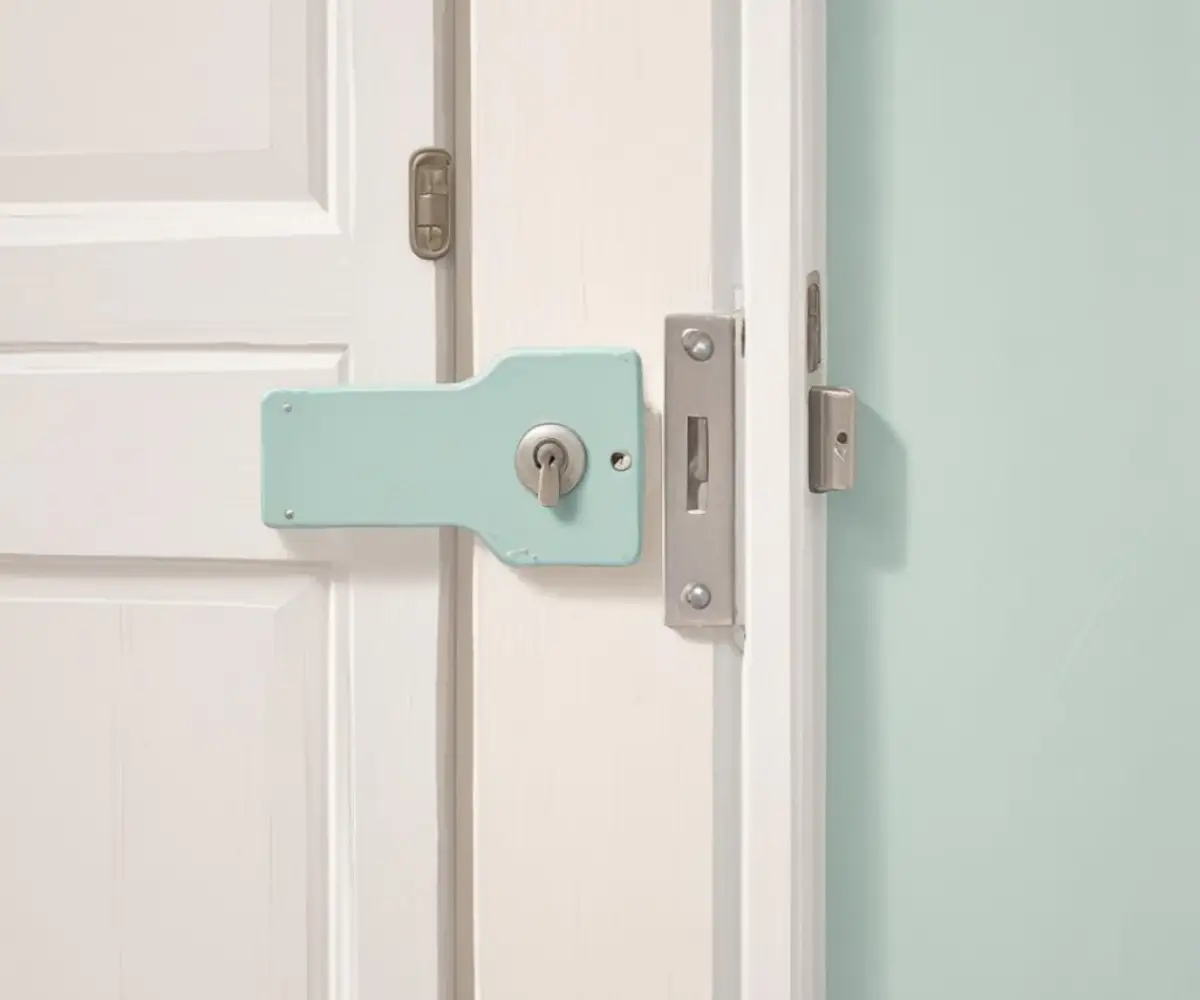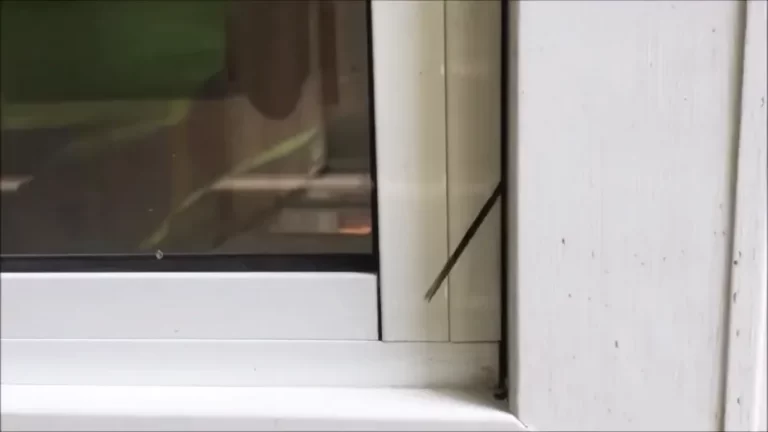Door Opens When Locked? Your Ultimate Fix-It Guide (In 5 Steps)
There’s nothing more unsettling than the click of a lock that doesn’t provide security. You turn the key or twist the knob, hear the familiar sound, but a simple push proves your door is not secure. A door that opens when locked is not just an annoyance; it’s a significant breach of your home’s safety and your peace of mind.
This common household problem can stem from several issues, ranging from simple wear and tear to more complex structural shifts in your home. Fortunately, most causes are straightforward and can be fixed with a few basic tools and a little bit of know-how. This guide will walk you through diagnosing and solving the problem, restoring security and function to your door.
You'll Learn About
Unlocking the Mystery: Why Your Locked Door Won’t Stay Shut
Before you can fix the problem, it’s essential to understand the mechanics of how a door lock works. The system is a simple partnership between the latch (the spring-loaded bolt in the door) and the strike plate (the metal plate on the doorframe with a hole in it). When the door closes, the latch should extend fully into the strike plate’s hole, securing the door.
When a locked door can be pushed open, it almost always means the latch isn’t engaging properly with the strike plate. The “lock” might be engaged, but if the latch itself has no purchase, the door remains unsecured. The primary culprit behind this failure is almost always misalignment.
The Common Causes of Failure
Several factors can lead to this frustrating misalignment. Homes naturally settle over time, causing door frames to shift. Seasonal weather changes can also cause the wood in your door and frame to expand or contract. These subtle movements are often enough to throw the latch and strike plate out of perfect alignment. Other common issues include loose hinges, worn-out hardware, or an incorrectly installed strike plate from the start.
Your Step-by-Step Diagnostic Checklist
Finding the exact cause of the problem is the first step toward fixing it. With a few simple checks, you can quickly pinpoint where the issue lies. This diagnostic process requires no special skills, just a keen eye and a methodical approach.
Start by slowly closing the door while watching the latch and strike plate at eye level. Observe how they meet. Does the latch hit the plate above, below, or to the side of the opening? This initial observation will guide your next steps.
The “Lipstick Test”: A Simple Trick for Perfect Alignment
For a more precise diagnosis, the “lipstick test” is an old but effective trick. Apply a small amount of lipstick, chalk, or even a dry-erase marker to the very tip of the latch bolt. Place a piece of masking tape over the strike plate.
Carefully close the door until the latch makes contact with the tape. When you open the door, the mark left on the tape will show you exactly where the latch is hitting. This tells you precisely how the strike plate needs to be adjusted.

Wiggle and Jiggle: Checking for Loose Components
Your door’s stability relies entirely on its hardware. Open the door and firmly grasp the knob, then try to wiggle the door up and down and back and forth. If you feel significant play or movement, the cause is likely loose hinges.
Check every screw on the door hinges—both on the door side and the frame side. A single loose screw can cause the door to sag enough to create misalignment. Similarly, check the screws holding your doorknob and strike plate in place.
From Problem to Solved: Fixing a Door That Opens When Locked
Once you have diagnosed the issue, you can proceed with the right solution. Most of these fixes are simple enough for a beginner DIYer and can be completed in under an hour. Start with the easiest potential fixes first before moving on to more involved adjustments.
Solution 1: Tightening and Adjusting Hardware
The simplest fix is often the correct one. Use a screwdriver to tighten every screw on the top and bottom hinges. If a screw spins freely and won’t tighten, it’s stripped. A quick fix for a stripped screw hole is to remove the screw, insert a few wooden toothpicks coated in wood glue into the hole, and break them off flush.
For a more robust solution, replace a short hinge screw with a 3-inch screw. This longer screw will bypass the worn-out wood of the jamb and bite into the solid wall stud behind it, pulling the entire doorframe tighter and often correcting minor sagging instantly.
Solution 2: Repositioning the Strike Plate
If the lipstick test shows a minor misalignment (less than 1/8 inch), you may not need to move the strike plate at all. Instead, you can simply enlarge the opening. Remove the strike plate and use a metal file to shave down the top or bottom edge of the hole until the latch can enter smoothly.
For larger misalignments, you will need to move the strike plate. Unscrew and remove it. Using your lipstick mark as a guide, chisel away a small amount of wood from the door jamb to allow the plate to sit in its new, correct position. Fill the old screw holes with wood filler or toothpicks and glue, then drill new pilot holes and re-install the plate.
Solution 3: Addressing Hinge-Side Misalignment
Sometimes the door is not sagging but is too far from or too close to the door jamb on the hinge side. This can also cause the latch to miss the strike plate. To fix this, you can use shims. Unscrew a hinge from the door jamb and place a thin piece of cardboard or a playing card behind it.
This shim will push the hinge slightly away from the jamb, moving the entire door. Adding a shim behind the top hinge will move the top of the door away from the hinge side, while a shim at the bottom hinge adjusts the bottom. This small adjustment can be enough to achieve perfect alignment.
Beyond the Basics: Hidden Causes and Pro-Level Fixes
While most issues are resolved with the steps above, some problems have deeper roots. Understanding these less common causes can help you tackle even the most stubborn door problems and shows a deeper level of home maintenance expertise. Regular upkeep, like ensuring parts are moving freely, is as crucial for doors as it is for other systems, such as when you’re lubricating pop up sprinkler heads to keep them functional.
A misaligned door can be a symptom of a larger issue, much like how seeing your side by side refrigerator doors not flush might indicate an uneven floor. Paying attention to these small details can prevent larger problems down the line.
The Hidden Impact of Weather and Humidity
Wooden doors are particularly susceptible to changes in humidity. In damp seasons, wood swells, and in dry weather, it contracts. This can cause a door that works perfectly in the summer to become misaligned in the winter.
If you notice this pattern, ensure your door is properly sealed with paint or varnish on all six sides (front, back, top, bottom, and both edges). This prevents moisture absorption and minimizes seasonal movement, providing a more stable and reliable fit year-round.
Foundation Shifts: The Deeper Problem
In some cases, a misaligned door is a symptom of a more significant issue: foundation settlement. If you notice other signs like cracks in your drywall (especially radiating from the corners of door frames), windows that stick, or uneven floors, your home’s foundation may be shifting.
While the door adjustments described here can provide a temporary fix, they do not address the root cause. If you suspect foundation issues, it’s crucial to consult with a structural engineer or foundation repair specialist. Addressing the underlying problem is essential for the long-term integrity of your home.
| Problem Symptom | Likely Cause | DIY Difficulty | Solution Summary |
|---|---|---|---|
| Door feels loose and wobbly | Loose Hinge Screws | Easy | Tighten all hinge screws. Use longer screws for stripped holes. |
| Latch hits slightly above or below strike plate hole | Minor Door Sag / Alignment | Easy | File the strike plate opening larger. |
| Latch hits far off from strike plate hole | Significant Misalignment | Medium | Reposition the strike plate up or down on the door jamb. |
| Door is not square in the frame | Hinge-Side Gap Issue | Medium | Add shims (thin cardboard) behind one or more hinges. |
| Problem recurs with seasonal weather changes | Wood Swelling/Shrinking | Easy | Ensure the door is properly sealed and painted on all sides. |
| Multiple doors/windows have issues; cracks in walls | Potential Foundation Settling | Professional Help Needed | Consult a structural engineer for a foundation assessment. |
Securing Your Peace of Mind
A door that closes and locks securely is fundamental to feeling safe in your own home. When a door opens even when locked, it’s a clear signal that something is wrong. By following a logical process of diagnosing the issue—checking for misalignment and loose hardware—you can apply a simple, effective fix.
Whether it’s tightening a few screws, adjusting a strike plate, or recognizing a deeper structural issue, taking action is key. These DIY repairs are well within the reach of most homeowners and will restore both the function of your door and your invaluable peace of mind.

